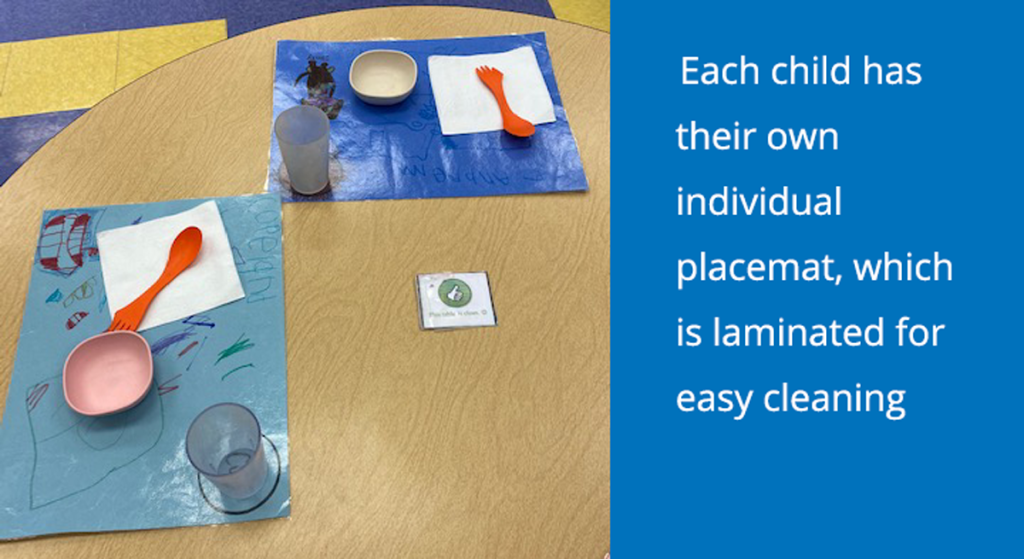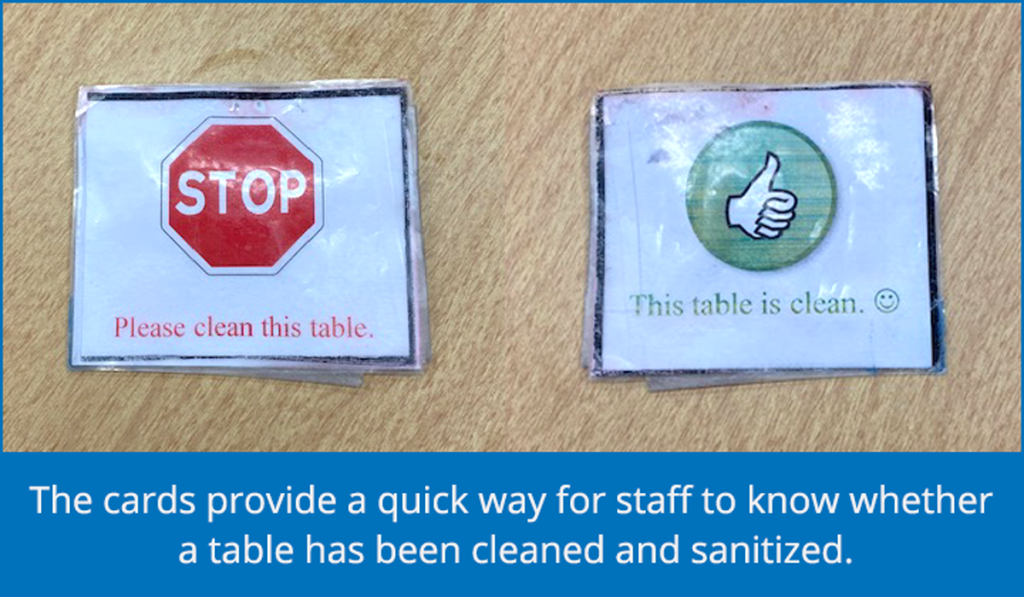As an early childhood educator, you know that meal and snack times offer a rich opportunity for learning. At the same time, you want to make sure the best health practices are being followed and a clean environment is maintained. It can be a challenge to balance it all. We found Marie Hendry of Little Knights Preschool, a Quality First program in the First Things First La Paz/Mohave region, who shared tips on managing mealtimes that work for her team.
Your program achieved a 5-star rating in your most recent assessment. Among the strengths identified, your program excelled in the area of meals and snacks. Conversations, self-help skills and sanitary practices were noted as strengths. How do the teachers balance these different priorities during meal and snack times?
It all comes down to being prepared and having a plan. Everyone knows what they are responsible for during mealtimes. You can have one teacher overseeing handwashing, while another teacher sits at the table and talks with children. We have found that having a plan with clear responsibilities allows us to focus on the present. We can relax and enjoy the time with the children. For example, yesterday during snack time, I overheard a game of “I Spy” focusing on colors and shapes in the classroom.
How does your program teach self-help skills during meal and snack times?
At Little Knights Preschool, children are encouraged to self-serve their drinks. Each table has two child-sized serving pitchers, one containing water and the other 100% juice or milk. Children are encouraged to pour their own drinks and pass the pitcher to the next child. (However, due to COVID guidelines, we are not practicing full family style meal service at this time.*)
How do teachers interact with children during meals and snacks?
Teachers sit with the children while they eat. Each child has a personalized laminated placemat with photos, drawings and stickers. The placemat is created by each child with their family. The placemat provides a tool to spur lively conversations as teachers ask questions about the people or drawings on the placemats. We ask the families to create one at the beginning of the year and another in January. We have two placemats created each year to maintain a healthy practice, as the laminate on the placemat deteriorates from cleaning.

How do you provide a clean, healthy and safe environment for meal and snack times?
Prior to arriving at a snack table, children must wash their hands for 20 seconds. They can do this by singing a song or counting out loud with a teacher. Children wash their hands after snack, before entering a play area.
Each table has dual-printed green thumbs up and a red thumbs down. Anytime an activity takes place at a table, the card is flipped to red thumbs down. This lets the teachers know that particular table needs to be cleaned and sanitized. Once the table is cleaned, the card is flipped over to green thumbs up. This practice takes place every time a table is used. We encourage the children to flip the card to red thumbs down when appropriate. We involve them so they are a part of the process of maintaining a healthy and clean environment.

Where did you get the idea for the cards, and what resources did you need?
The cards are new this year. We adopted this process from the idea of our assistant principal. Our center is located on a high school campus, and she incorporated the cards in the library when we had large amounts of students utilizing the library tables during distance learning. The source was a two-sided template and was then laminated. It did not cost us any money and it was easy to find the template online.
*A note about family-style dining…
A “family-style” meal encourages and supports social, emotional, gross and fine motor skill development and is part of the Empower standards and many other best practice sources. Sitting and eating with children is a chance to get children to interact with each other and for the adults to provide a positive example. Conversations at the table add to a fun mealtime environment and provide opportunities for informal modeling of good eating behaviors, communication and teaching about nutrition.
Family-style meals allow you to set the stage for meal and snack times that are more productive and pleasant. Family-style meals can be modified to meet the needs of the facility and children served.
To limit the spread of COVID-19, some of the components of family-style meal service are not recommended at this time. Other elements are still fine. Whichever elements you decide to implement; you always need to pay special attention to sanitary practices.
For example, although it is not recommended for children to pass a serving container from individual to individual at this time, having an adult seated with children, even with social distancing, promotes engaging conversations during meal times. In addition, allowing children to decide what and how much to eat, even if they aren’t serving themselves with a serving spoon for sanitary reasons still supports their development of a healthy relationship with food.
At Quality First, we love to hear from you. Share your new and innovative practices so others can be inspired. Send an email to QualityFirst@FirstThingsFirst.org.
